Lean Portfolio Management (LPM) aligns strategic goals directly to execution with a modern, agile approach, ensuring every investment delivers maximum value.
While traditional portfolio management often struggles to keep pace, leading to misaligned priorities and wasted resources, LPM empowers organizations to prioritize the right work, respond swiftly to change, and foster a culture of continuous improvement.
In this guide, we’ll explore the core principles and key functions of Lean Portfolio Management and how your organization can benefit from its adoption. We’ll also highlight some LPM tools and techniques, including monday dev.
Try monday devWhat is Lean Portfolio Management (LPM)?
Lean Portfolio Management (LPM) is a modern management approach that aligns an organization’s strategy with its execution by applying Lean and Agile principles at the portfolio level. Its core purpose is to ensure that all projects, products, and initiatives are strategically prioritized, efficiently funded, and continuously improved to deliver maximum value to customers and the business.
How has project portfolio management evolved?
Project portfolio management (PPM) has evolved from its origins in the financial theories of the 1950s — which focused on risk mitigation and resource optimization — to a sophisticated discipline that now emphasizes strategic alignment, value delivery, and adaptability. Modern or strategic project portfolio management now prioritizes aligning projects with business strategy, continuous reprioritization, and maximizing long-term value, moving beyond simply tracking project status to driving organizational success in dynamic environments.
Lean Portfolio Management (LPM) vs. traditional portfolio management
LPM differs from traditional portfolio management in several fundamental ways.
| Traditional Portfolio Management | Lean Portfolio Management (LPM) |
|---|---|
| Annual planning and fixed budgets | Rolling, iterative planning, and funding |
| Project-based funding | Value stream-based funding |
| Centralized decision-making | Decentralized, empowered teams |
| Focus on task/resource completion | Focus on value and outcomes |
| Rigid governance | Lean, adaptive governance |
LPM emphasizes continuous, adaptive planning and decentralized decision-making, allowing organizations to quickly pivot and reprioritize work based on real-time feedback and changing business needs. In contrast, traditional portfolio management typically relies on top-down, long-term planning cycles with fixed scopes and centralized control, making it less responsive to change.
LPM also focuses on delivering value incrementally through value streams, whereas traditional approaches often measure success by adherence to plans and completion of projects rather than actual business outcomes. This makes LPM better suited for dynamic environments where agility and value delivery are critical.
What are the core principles of Lean Portfolio Management (LPM)?
LPM’s core principles revolve around delivering customer value, enabling adaptability, decentralizing decisions, aligning with strategy, and fostering a culture of continuous improvement and transparency. These principles empower organizations to maximize value, respond rapidly to change, and achieve business agility.
| Principle | Description |
|---|---|
| Customer value focus | Prioritize delivering what customers and stakeholders need most |
| Incremental delivery | Deliver value in small, frequent increments |
| Decentralized decision-making | Empower teams to make timely, local decisions |
| Adaptive, transparent strategy | Continuously adjust strategy with clear communication and feedback |
| Lean governance and funding | Fund value streams dynamically, with lean budgeting and guardrails |
| Strategic alignment | Ensure all work supports organizational goals and strategic themes |
| Continuous improvement | Use feedback loops and metrics to drive ongoing optimization |
| Visibility and transparency | Provide stakeholders with clear portfolio data and insights |
| Balance capacity and demand | Limit work-in-progress and match resources to the highest-value work |
Here’s a detailed breakdown:
1. Focus on customer value
LPM is fundamentally customer-centric — it prioritizes delivering value to customers rather than simply completing projects or meeting deadlines. LPM encourages organizations to define what “value” means for their customers and stakeholders, ensuring that all initiatives and investments are aligned to meet these needs.
2. Incremental and continuous delivery
Instead of delivering value only at project completion, LPM emphasizes breaking work into smaller increments and delivering value continuously. This approach reduces risk, enables faster feedback, and allows rapid adaptation to changing requirements.
3. Decentralized decision-making
LPM empowers teams and individuals to make decisions closer to the work, reducing bottlenecks and increasing organizational agility. Decentralized decision-making fosters autonomy, innovation, and faster response times.
4. Adaptive, transparent strategy
LPM promotes adaptive planning and transparency. Strategies are communicated clearly across the organization and are regularly revisited and adjusted based on feedback, market changes, and business outcomes. This ensures alignment and the ability to pivot as needed.
5. Lean governance and value-based funding
Rather than funding individual projects on a fixed annual cycle, LPM funds value streams and uses lean budgeting practices. This allows for dynamic resource allocation, responsive funding, and a focus on maximizing return on investment.
6. Alignment with strategic objectives
LPM ensures that all initiatives and investments within the portfolio directly align with the organization’s strategic themes and objectives. This strategic alignment ensures investment decisions support long-term goals while balancing immediate business needs and delivering the most valuable outcomes to customers and stakeholders.
7. Continuous improvement and feedback loops
LPM incorporates regular feedback loops and performance metrics — such as KPIs and OKRs — to drive continuous improvement. Frequent inspection, adaptation, and learning ensure that portfolios remain optimized for value and efficiency.
8. Visibility and transparency
LPM provides high visibility into portfolio status, progress, and outcomes. Stakeholders must have access to relevant data and insights to make informed decisions and maintain alignment.
9. Balance capacity and demand
LPM actively manages the balance between available capacity and demand for work, limiting work-in-process and ensuring resources focus on the most valuable opportunities.
Key functions of Lean Portfolio Management (LPM)
LPM’s key functions — strategy and investment funding, agile portfolio operations, and lean governance — work together to ensure that organizations invest in the right initiatives, deliver value efficiently, and maintain effective oversight, all while remaining agile and responsive to change.
| Function | Description |
|---|---|
| Strategy and investment funding | Aligns investments with strategy, prioritizes high-value work, manages dynamic funding |
| Agile portfolio operations | Enable decentralized execution, optimize value flow, support continuous delivery |
| Lean governance | Provides oversight, ensures compliance, manages performance, fosters transparency |
Here’s a detailed breakdown:
1. Strategy and investment funding
- Aligns portfolio with strategic objectives: LPM ensures that portfolio investments directly support the organization’s strategic goals and business outcomes.
- Prioritizes and funds high-value work: By continuously identifying, evaluating, and prioritizing investment proposals, LPM directs funding to initiatives that deliver the greatest value and return on investment.
- Dynamic resource allocation: Funding is managed at the value stream level, allowing for flexible adjustments as priorities shift and new opportunities arise.
- Outcome-based planning: Objectives and key results (OKRs) clarify investment priorities and track progress toward strategic outcomes.
2. Agile portfolio operations
- Facilitates decentralized execution: LPM supports agile teams and value streams by enabling decentralized decision-making and empowering teams to deliver solutions efficiently.
- Optimizes flow of value: Using Lean and Agile practices, LPM removes bottlenecks, streamlines processes, and ensures a continuous flow of value to customers.
- Synchronizes planning and feedback: Regular cadenced events, such as Portfolio Syncs, help align teams, address dependencies, and adapt to feedback.
- Supports continuous delivery: LPM establishes mechanisms for ongoing delivery and transparent reporting, allowing organizations to adapt quickly to changing market demands.
3. Lean governance
- Oversight and compliance: LPM oversees portfolio performance, ensuring that investments deliver expected value while adhering to necessary controls and compliance requirements.
- Lean budgeting and guardrails: Governance includes lean budgeting practices, financial controls, and guardrails that promote transparency and accountability without stifling agility.
- Performance measurement: Regular tracking of key performance indicators (KPIs) and value realization ensures that the portfolio remains aligned with strategic goals and enables continuous improvement.
- Promotes transparency and collaboration: Governance structures foster open communication, cross-functional collaboration, and shared responsibility for outcomes.
What are the benefits of implementing LPM?
Implementing Lean Portfolio Management (LPM) empowers organizations to maximize value, increase agility, accelerate delivery, and continuously improve — all while maintaining strong strategic alignment and transparency across the portfolio. Key advantages include:
| Benefit | Description |
|---|---|
| Strategic alignment | Ensures work supports business goals and delivers customer value |
| Increased agility | Enables rapid response to change and evolving market demands |
| Faster time to market | Delivers value incrementally and reduces cycle times |
| Efficient resource allocation | Focuses resources on high-value work, reduces waste |
| Continuous improvement | Drives ongoing learning, adaptation, and process refinement |
| Reduced waste and bottlenecks | Minimizes non-value-adding activities and delivery delays |
| Transparency and value realization | Provides real-time insight into performance and outcomes |
| Enhanced innovation | Supports experimentation and rapid pivots |
| Improved product fit | Ensures offerings better match customer needs through frequent validation |
1. Strategic alignment
LPM ensures that all projects and initiatives are directly aligned with the organization’s strategic objectives, keeping teams focused on work that delivers the highest value to customers and stakeholders. This alignment helps avoid wasted effort on low-priority or outdated initiatives.
2. Increased business agility
By adopting continuous planning, short feedback loops, and decentralized decision-making, LPM enables organizations to quickly adapt to changing market conditions, customer needs, and business priorities. This agility is crucial for thriving in volatile environments.
3. Faster time to market
LPM breaks work into smaller increments and delivers value continuously, rather than waiting for entire projects to complete. This approach allows organizations to release products and features more rapidly, respond to feedback sooner, and gain a competitive advantage.
4. Efficient resource allocation
LPM optimizes how resources are allocated by prioritizing high-value work and funding value streams instead of individual projects. This reduces waste, eliminates bottlenecks, and ensures that resources are focused where they will have the most significant impact.
5. Continuous improvement
Regular feedback loops, metric-driven assessments, and iterative planning foster a culture of ongoing learning and improvement. Organizations can quickly identify what works, adjust strategies, and refine processes to maximize outcomes.
6. Reduced waste and bottlenecks
Lean principles embedded in LPM help eliminate non-value-adding activities, minimize work-in-progress, and reduce delays caused by dependencies and handoffs. This streamlining leads to more efficient and predictable delivery.
7. Greater transparency and value realization
LPM promotes transparency through real-time reporting, clear objectives, and well-defined metrics such as KPIs and OKRs. Stakeholders gain better visibility into portfolio performance and value realization, enabling more informed decision-making.
8. Enhanced innovation
By enabling incremental funding and the ability to pivot based on feedback, LPM creates space for experimentation and innovation without the risk of large-scale waste. Teams are empowered to pursue new ideas and quickly adapt if results do not meet expectations.
9. Improved product fit
Frequent delivery and validation cycles ensure that products and solutions are better matched to customer needs, reducing the risk of delivering outdated or misaligned offerings.
Steps to implement Lean Portfolio Management
Implementing Lean Portfolio Management (LPM) involves aligning strategy with value streams, adopting adaptive planning, streamlining workflows, enabling continuous delivery, and fostering a culture of transparency and continuous improvement.
| Step | Description |
|---|---|
| Establish strategic themes and outcomes | Define clear objectives, themes, and measurable outcomes |
| Map and fund by value streams | Identify value streams and allocate funding/resources dynamically |
| Capture and manage demand | Centralize, prioritize, and manage all demand by value stream |
| Shift to continuous and adaptive planning | Shift to ongoing, flexible planning and regular adjustment |
| Establish a lean workflow | Streamline processes, remove waste, and visualize workflow |
| Support continuous delivery and reporting | Enable ongoing value delivery and real-time performance tracking |
| Manage outcomes and value realization | Track, measure, and optimize business outcomes and value realization |
| Foster continuous improvement | Promote feedback, learning, and ongoing process refinement |
The following steps ensure your portfolio remains agile, efficient, and focused on delivering maximum value:
Step 1: Establish strategic themes and outcomes
- Define your organization’s mission, vision, and strategic objectives in clear, actionable terms.
- Break down strategic priorities into themes and objectives, each with measurable outcomes and metrics for performance.
- Use roadmaps and regular communication to ensure alignment and understanding across all stakeholders.
Step 2: Map and fund by value streams
- Identify value streams — end-to-end sequences that deliver customer or business value.
- Allocate funding and resources at the value stream level, not individual projects, to enable dynamic investment and efficient cost management.
- Regularly monitor planned, forecast, and actual spend to drive adjustments and optimize returns.
Step 3: Capture and manage demand by value stream
- Centralize all demand (strategic, customer, operational) and prioritize it against strategic objectives in a single, integrated system.
- Use lean business cases based on cost estimates and benefit forecasts to guide prioritization within and across value streams.
- Ensure demand-driven adjustments are integrated with existing roadmaps and plans.
Step 4: Shift to continuous and adaptive planning
- Move away from rigid, annual planning cycles to ongoing, adaptive planning.
- Regularly revisit and adjust plans based on feedback, changing business needs, and market conditions.
- Use portfolio management tools, Kanban boards, or Gantt charts to visualize and manage workflow stages.
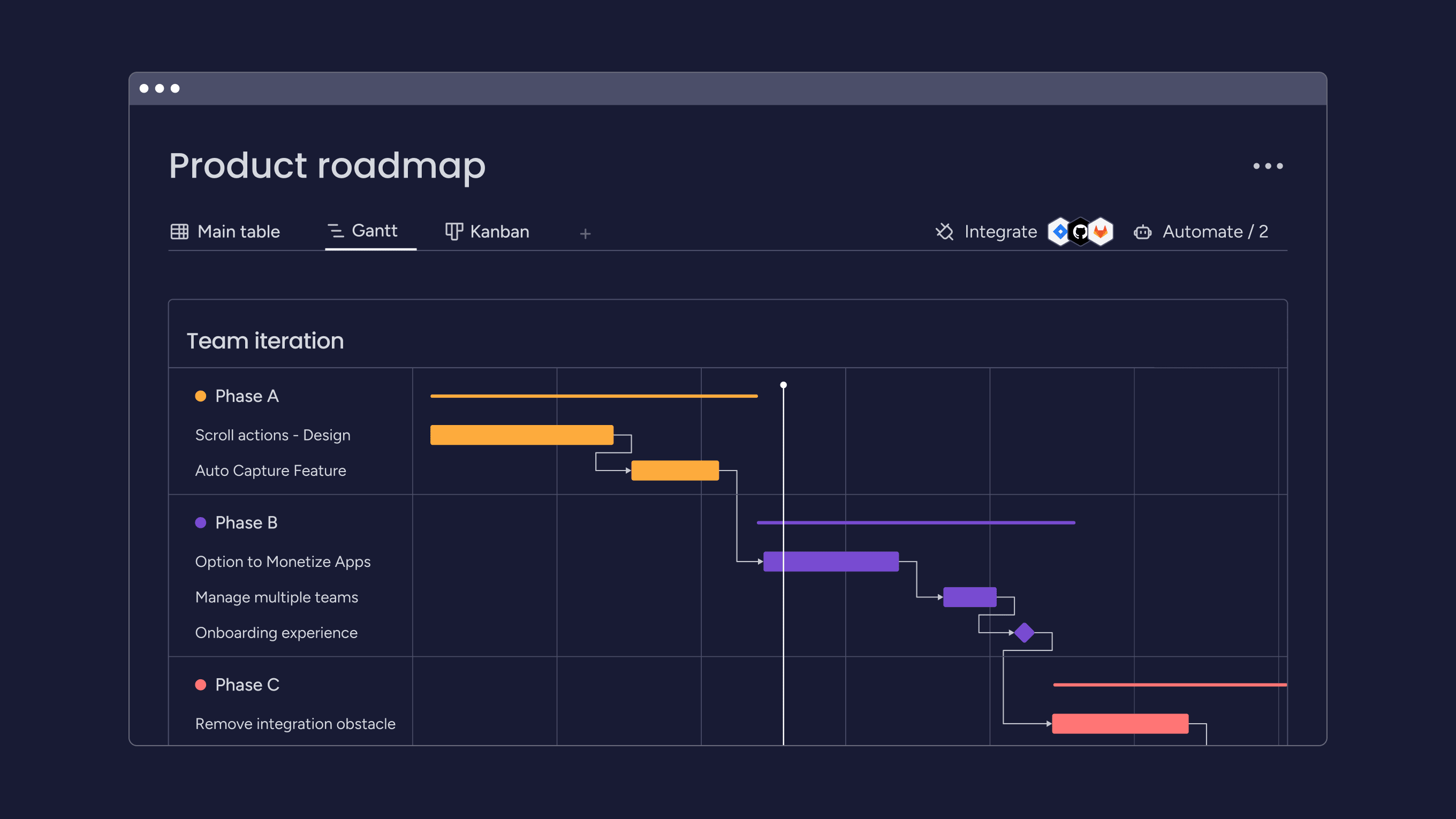
Step 5: Establish a lean workflow and remove waste
- Streamline portfolio management processes by eliminating inefficiencies and non-value-adding activities.
- Implement pull systems and workflow visualizations to promote efficiency and transparency.
- Assign clear roles and responsibilities to optimize flow and reduce bottlenecks.
Step 6: Support continuous delivery and reporting
- Integrate business strategy with agile delivery principles, enabling continuous value delivery through your value streams.
- Ensure real-time visibility into delivery status and value realization using defined financial and non-financial metrics.
- Support various agile, traditional, and hybrid work methods and provide value-based reporting to all stakeholders.
Step 7: Manage business outcomes and value realization
- Track objectives with well-defined metrics, KPIs, and OKRs throughout the delivery and benefits realization cycle.
- Provide stakeholders with clear insights into performance, enabling quick identification of variances and seamless portfolio adjustments.
- Foster a culture of continuous improvement by regularly reviewing and refining processes and outcomes.
Step 8: Foster a culture of continuous improvement
- Encourage ongoing feedback, learning, and adaptation at all levels of the organization.
- Celebrate successes, learn from failures, and use lessons learned to optimize the portfolio management process further.
LPM tools and techniques
Implementing Lean Portfolio Management (LPM) requires a combination of practical tools and techniques. The most effective LPM programs leverage visual management tools, like Kanban boards and dashboards, value stream mapping, lightweight business cases, and decentralized, adaptive techniques to maximize value, improve visibility, and foster continuous improvement across the portfolio.
Key tools for LPM
- Kanban boards: Visualize the flow of work across the portfolio, making it easy to track progress, identify bottlenecks, and optimize workflow. Kanban boards are widely used to manage dependencies and work-in-progress at the portfolio level.
- Value stream mapping: Visualizes how value flows through the portfolio, from strategic planning to delivery, to identify inefficiencies and opportunities for improvement. This ensures that all steps add value and support optimization efforts.
- Portfolio backlogs: Centralized lists of all proposed initiatives, projects, and work items, prioritized based on lean criteria such as value, cost of delay, and dependencies. This enables transparent and strategic prioritization across the portfolio.
- Dashboards and analytics: Provide real-time visibility into portfolio status, resource allocation, and performance metrics. Dashboards support data-driven decision-making and alignment across stakeholders.
- A3 reports: Structured, one-page reports used for problem-solving, root cause analysis, and documenting improvement actions. A3 thinking encourages critical dialogue and continuous improvement.
- Lean business cases: Lightweight business cases with just enough information to support go/no-go decisions for funding and prioritization, replacing heavy project documentation.
Core techniques for LPM
- Minimum Viable Product (MVP) approach: Focus on delivering the simplest version of a solution to gather early feedback, validate assumptions, and reduce the risk of over-investment. The MVP technique supports incremental value delivery and rapid learning.
- Continuous and adaptive planning: Replace rigid annual planning with rolling, iterative planning cycles. Regularly revisit priorities and funding decisions based on feedback, changing needs, and new information.
- Lean governance: Apply lightweight, decentralized governance structures that empower teams, streamline decision-making, and promote accountability while reducing bureaucratic overhead.
- Decentralized decision-making: Push decision authority to self-organizing teams and value stream leaders, enabling faster responses and greater ownership within defined guardrails.
- Metrics and feedback loops: Use a blend of outcome-based metrics — like Objectives and Key Results (OKRs) — flow metrics, and Lean-Agile metrics to monitor progress and drive continuous improvement.
How to use monday dev for Lean Portfolio Management (LPM)
Built on the robust monday.com Work OS, monday dev enables organizations to visualize, manage, and optimize their project portfolios based on lean and Agile principles.
Here’s how you can leverage monday dev for effective LPM:
- Centralize portfolio oversight: Aggregate data from multiple project boards to monitor progress, resource allocation, and alignment with strategic goals in one place. Use columns like Status, Timeline, Progress, and Owner to track the state and responsibility for each portfolio item.
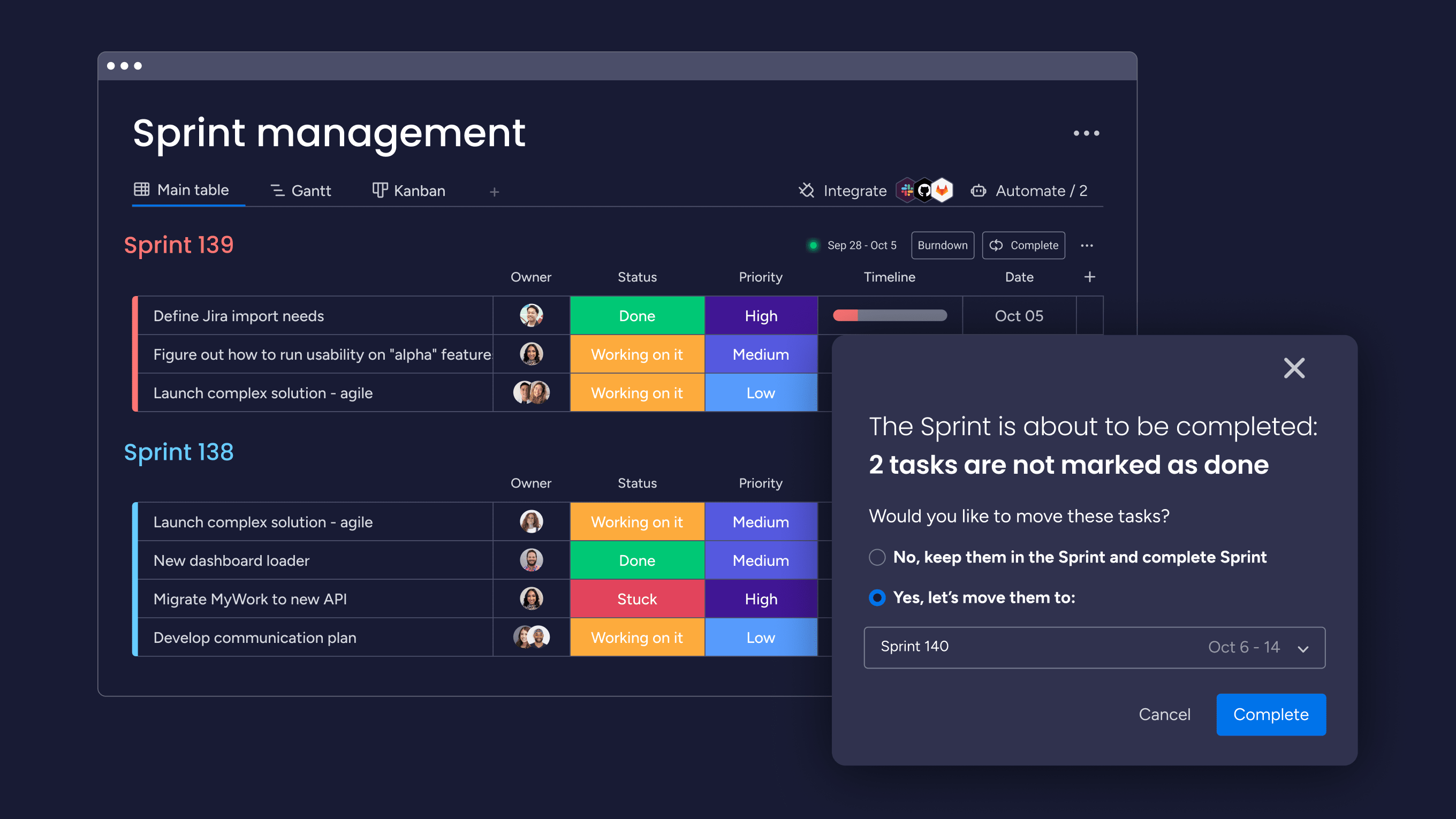
- Map and manage value streams: Use custom dashboards and connected boards to see how resources and investments are distributed across different value streams and spot opportunities to eliminate waste.
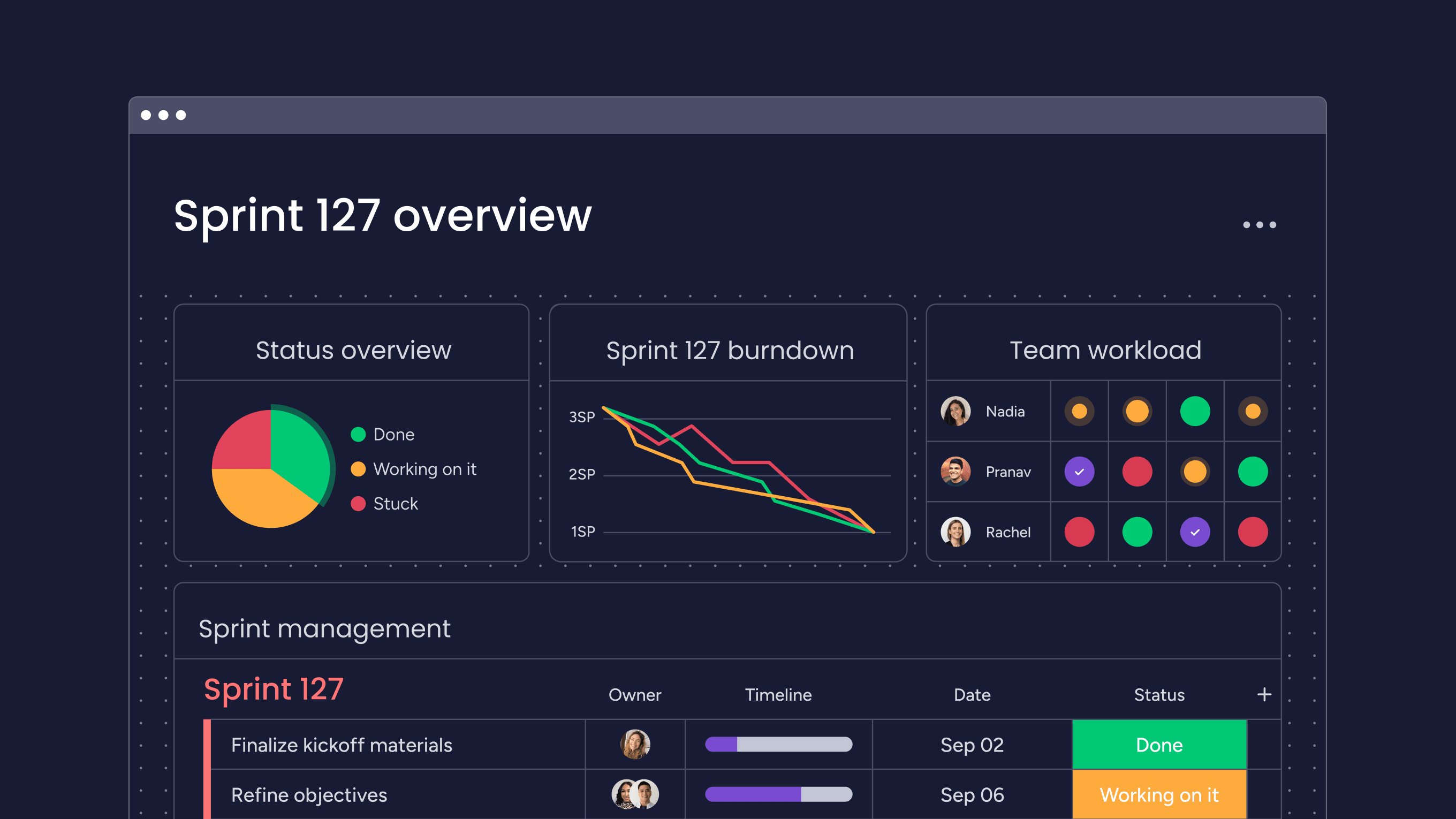
- Visualize and optimize value flow: Leverage visualization tools such as Gantt charts, Kanban boards, and custom dashboards to track project timelines, dependencies, and bottlenecks. Check planned vs. actual timelines and quickly identify issues with Burndown charts.
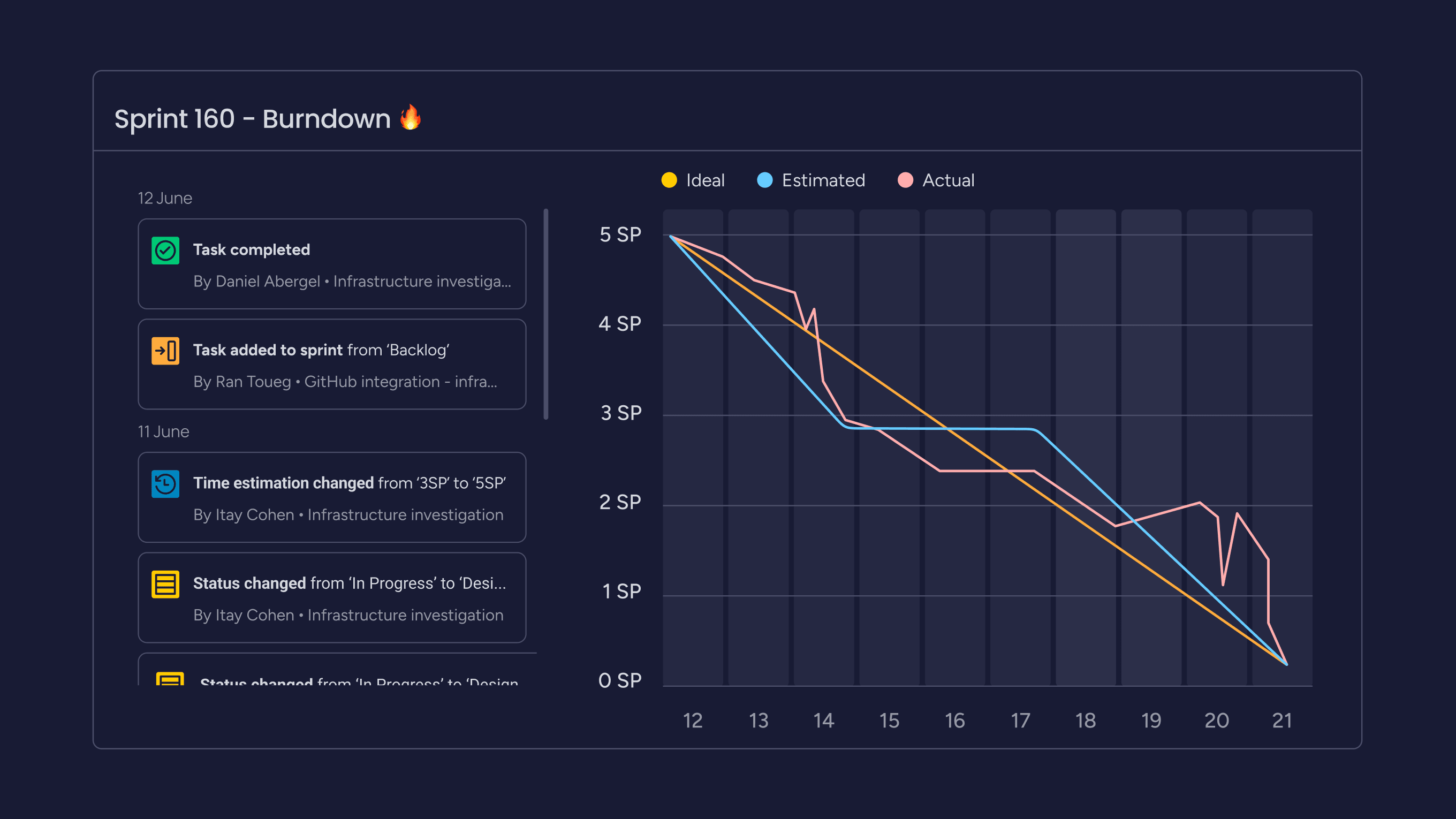
- Enable lean governance and continuous improvement: Assign clear ownership for each portfolio item using dedicated columns, ensuring accountability and streamlined communication. Use built-in analytics and KPIs to regularly reassess processes, measure efficiency, and pursue continuous improvement.
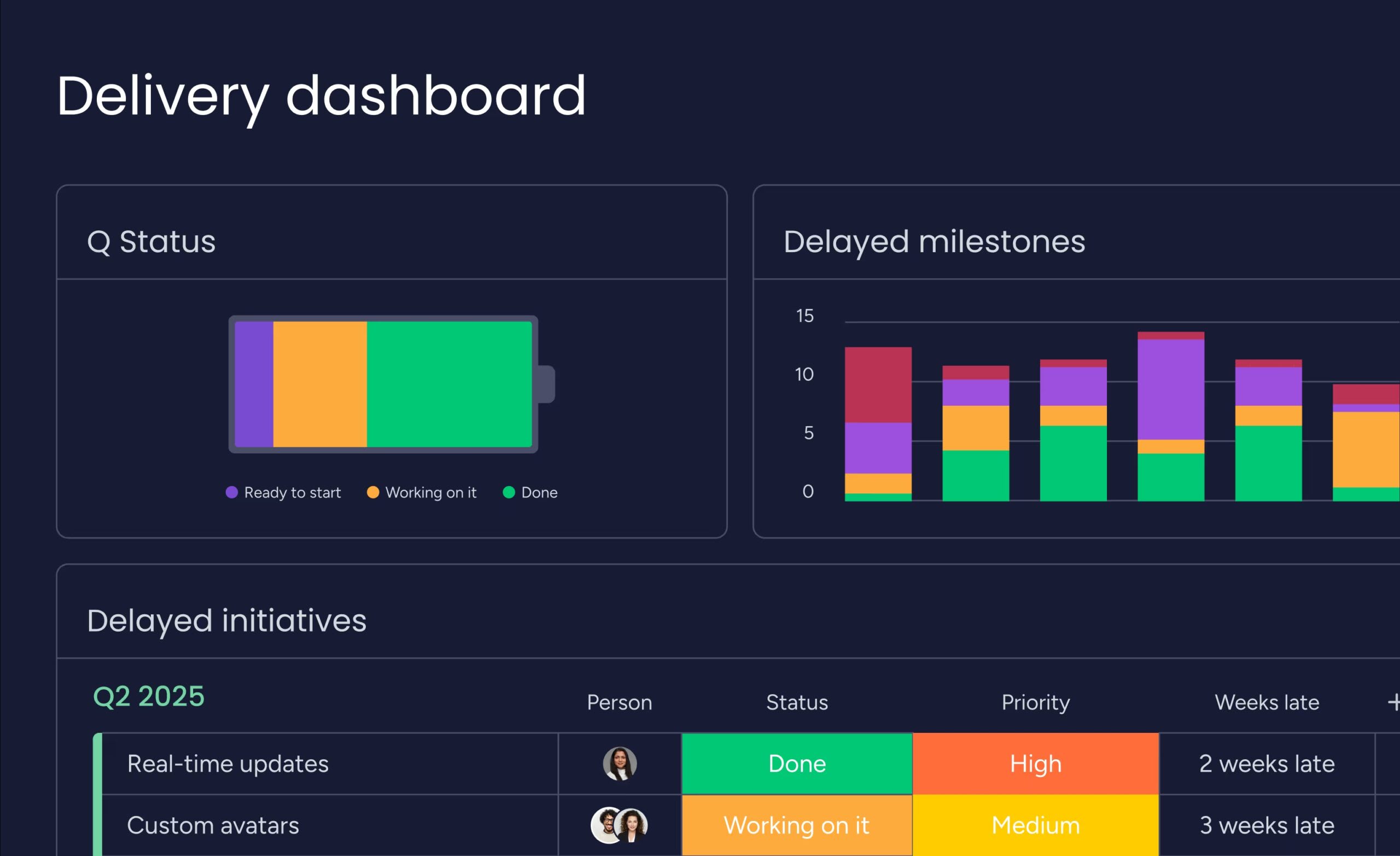
- Respond to customer pull and strategic demand: Update and prioritize portfolio items based on real customer demand and strategic objectives, not just on a fixed schedule. Quickly adjust priorities, reallocate resources, and ensure work meets stakeholder needs.
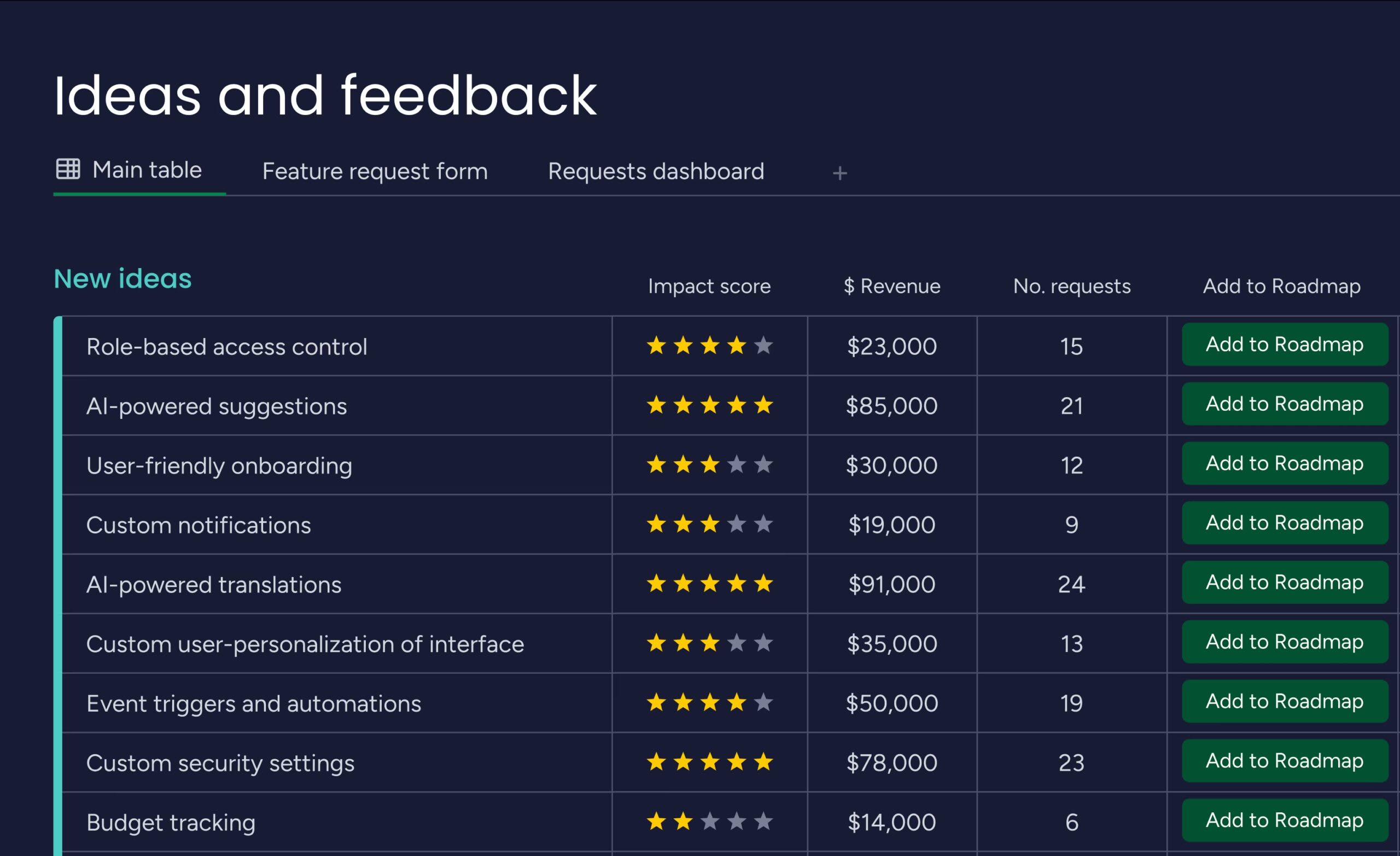
- Automate and integrate for efficiency: Automate routine updates, onboarding of new portfolio items, and status reporting to reduce manual work and speed up portfolio management processes. Integrate with other tools and apps — like Figma and GitHib — to centralize information and streamline workflows.
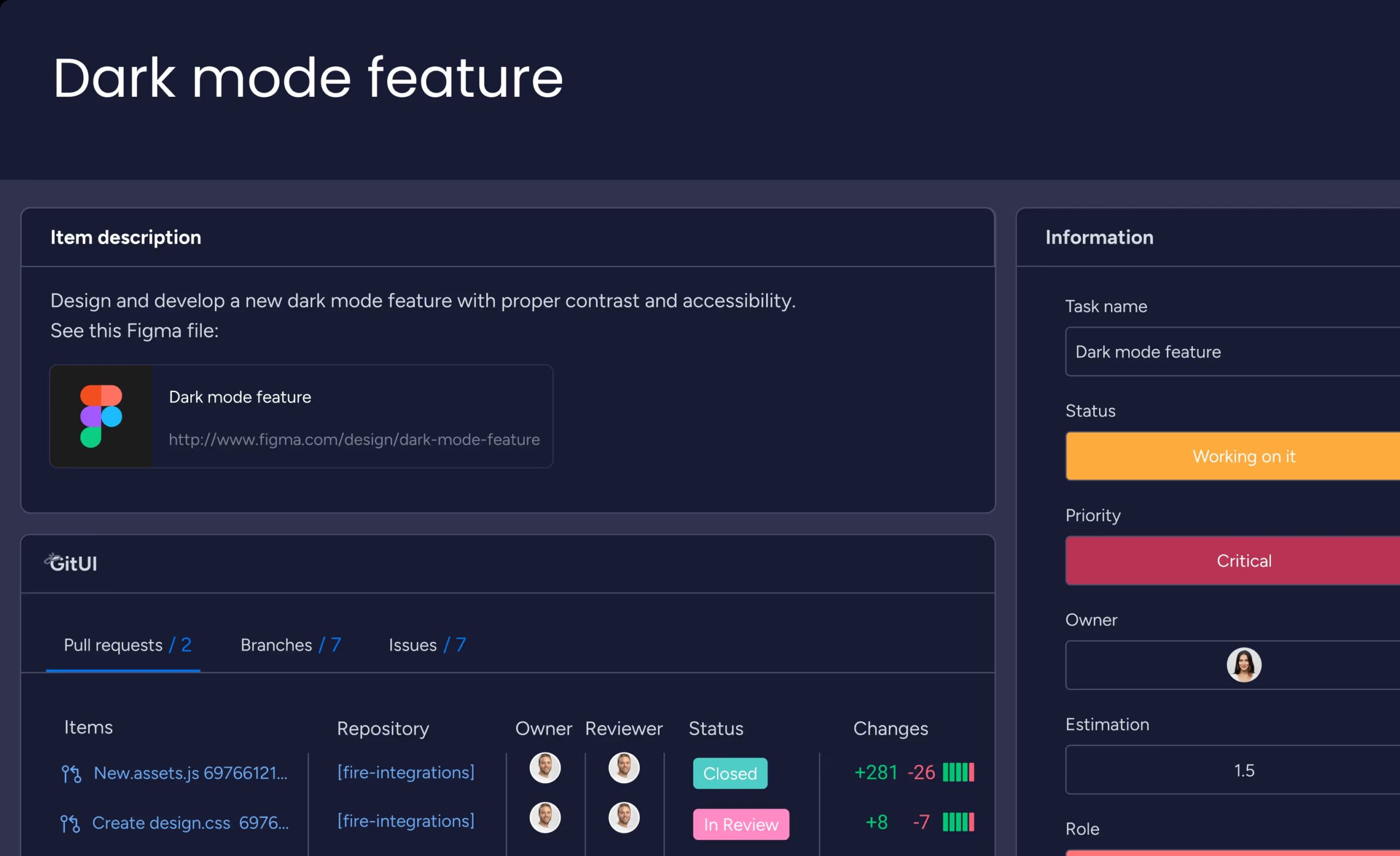
Using monday dev, you can implement Lean Portfolio Management practices that drive efficiency, agility, and value across your organization.
Try monday devFAQs
Why is Lean Portfolio Management (LPM) important?
Lean Portfolio Management (LPM) is important because it aligns organizational strategy with execution, enabling companies to prioritize and fund the highest-value work while maximizing business outcomes. By shifting from rigid, long-term planning to continuous, adaptive cycles, LPM increases agility, allowing organizations to respond quickly to changing market conditions and customer needs. This approach also reduces waste, accelerates time to market, and fosters a culture of continuous improvement and innovation across the enterprise.
What is the difference between lean and Agile?
Lean philosophy eliminates waste and optimizes processes to maximize value and efficiency. At the same time, Agile is a methodology centered on adaptability, iterative development, and delivering working solutions quickly in response to changing user needs. In essence, Lean seeks to streamline operations and reduce unnecessary steps, whereas Agile emphasizes rapid, customer-focused delivery through short cycles and continuous feedback.
What is SAFe Lean Portfolio Management (SAFe LPM)?
SAFe Lean Portfolio Management (SAFe LPM) is a specialized implementation of Lean Portfolio Management (LPM) within the Scaled Agile Framework (SAFe) that aligns organizational strategy and investments with agile execution at scale. It integrates lean principles with SAFe’s structured practices to manage portfolios through three core functions: strategy and investment funding, agile portfolio operations, and lean governance. SAFe LPM emphasizes value stream-centric funding, decentralized decision-making, and continuous adaptation, enabling large organizations to prioritize the most valuable work, foster collaboration, and deliver business outcomes efficiently and predictably.
 Get started
Get started 
